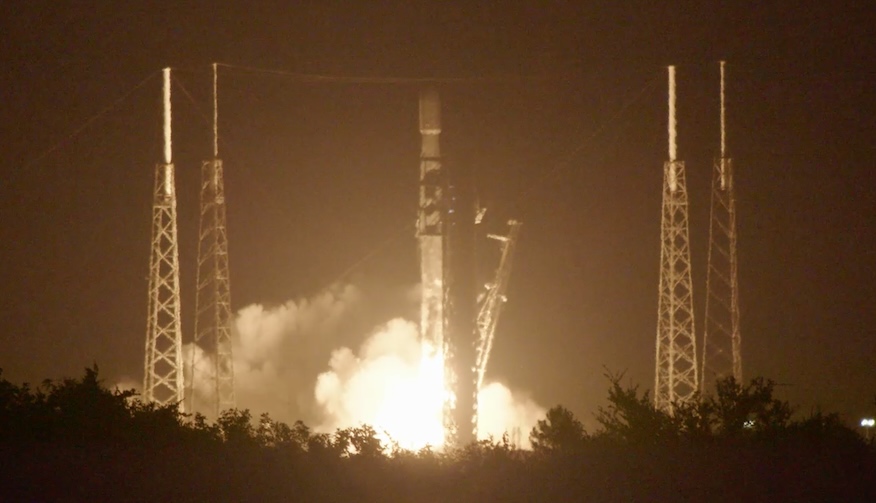SpaceX launched a Falcon 9 rocket on Tuesday night, 14 years to the day the rocket made its launch debut from the same platform. Since that day, SpaceX has launched more than 340 Falcon 9 rockets, 285 of which used previously flown boosters.
The Starlink 8-5 mission lifted off from pad 40 at the Cape Canaveral Space Force Station at 10:16 p.m. EDT (0216 UTC).
The Falcon 9 first stage booster, tail number B1067 in the SpaceX fleet, launched for the 20th time. It previously supported the flights of two Crew Dragon astronaut missions, two Cargo Dragon resupply missions to the International Space Station and 10 previous Starlink deliveries.
About 8.5 minutes after liftoff, B1067 landed on SpaceX’s Read Instructions Only drone ship. This was the 83rd landing using JRTI and the 316th booster landing to date.
On board the Falcon 9 flight were 20 Starlink V2 Mini satellites, including 13 that work directly on mobile.
In a post on his social media platform X (formerly Twitter), SpaceX founder Elon Musk stated on June 2 “Starlink just hit a new internal average latency record of 28ms yesterday,” later adding that “average latency for US Starlink Internet to drop below 20ms.”
The update on the network’s reported capabilities came a day after Michael Nicolls, SpaceX’s vice president of Starlink Engineering, shared a post summarizing the impact of SpaceX’s 11 Starlink launches conducted in May.
He noted that the 26 Starlink direct-to-mobile satellites represented more than eight percent of what is needed for initial cell phone service with partner T-Mobile. This suggests that SpaceX needs about 325 such Starlink satellites to achieve this goal.
One month is enough @Starlink thanks to Falcon’s accelerated launch rate!
+ 11 releases
+ 221 Ku satellites – over 20 Tbps frontal capacity
+ 26 direct-to-mobile satellites – over 8% of satellites needed for initial direct-to-mobile service pic.twitter.com/pwUj8kdWUj– Michael Nicolls (@michaelnicollsx) June 1, 2024
Starship Flight 4
The launch comes on the same day that the Federal Aviation Administration approved a launch license modification that allows SpaceX to move forward with Flight 4 of its Starship rocket. The agency noted that SpaceX “met all safety and other licensing requirements for this test flight.”
The FAA also included language in its statement suggesting that SpaceX may not have to wait that long if things fall under certain parameters outlined by SpaceX.
“As part of its license modification request, SpaceX proposed three scenarios involving Starship entry that would not require a vehicle loss investigation,” the FAA said in a statement. “The FAA approved the scenarios as test-caused injury exemptions after evaluating them as part of flight safety and flight risk analyzes and confirming that they met public safety requirements.”
“If a different anomaly occurs with the Starship vehicle, an investigation may be warranted, as well as if an anomaly occurs with the Super Heavy booster rocket.”
The FAA also cleared SpaceX to conduct a controlled or uncontrolled reentry of the Starship. However, he specified that SpaceX must notify the FAA before launch if it chooses the second option.

